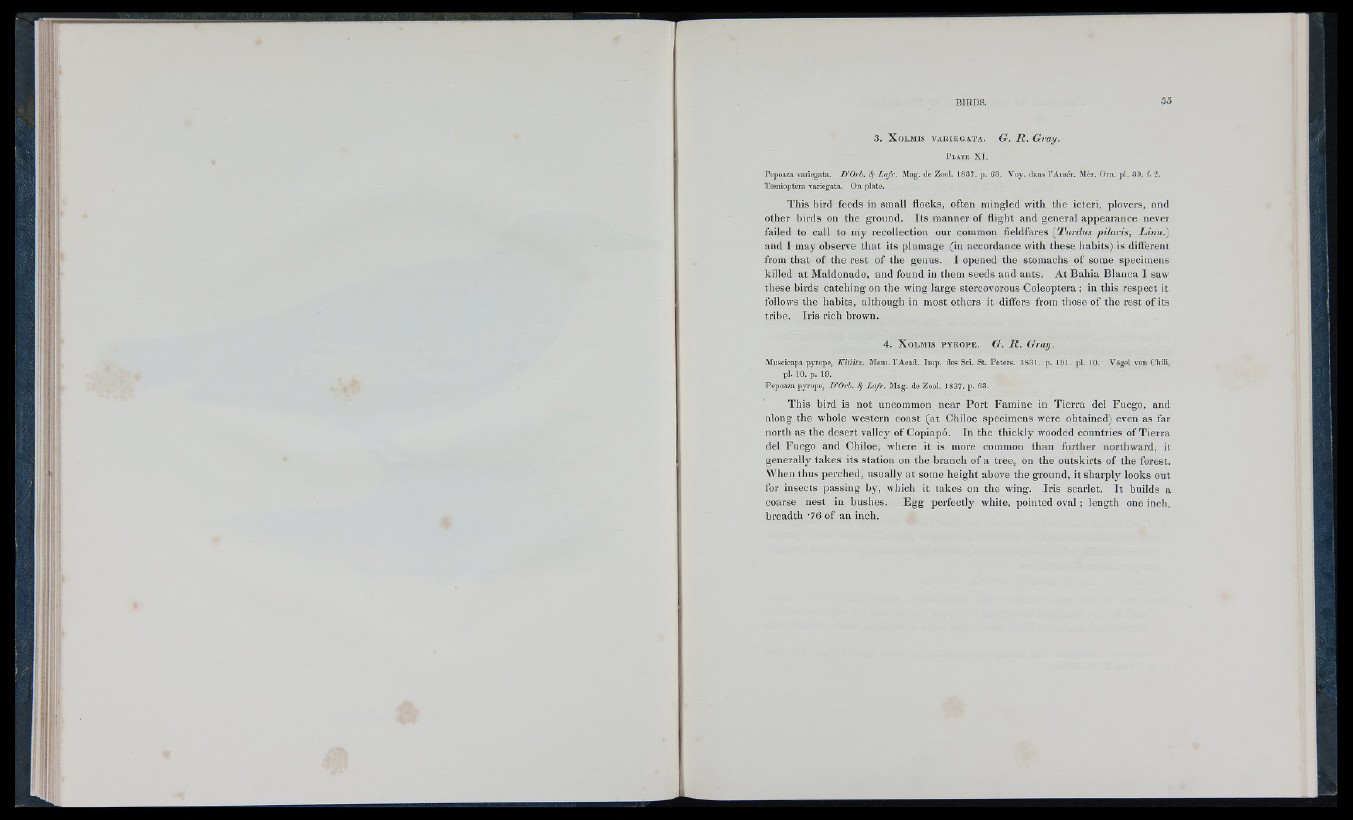
3 , X o l m i s v a b i e g a t a . G. R. Gray.
P l a t e X I.
Pepoaza variegata. UOrb. Sf Lafr. Mag. de Zool. 1837. p. 63. Voy. dans I’Amér. Mér. Orn. pi. 39. f. 2.
Tfenioptera variegata. On plate.
This bird feeds in small flocks, often mingled with the icteri, plovers, and
other birds on the ground. Its manner of flight and general appearance never
failed to call to my recollection our common fieldfares {2'urdus pilaris, Linn.)
and I may observe that its plumage (in accordance with these habits) is different
from that of the rest of the genus. I opened the stomachs of some specimens
killed at Maldonado, and found in them seeds and ants. At Bahia Blanca I saw
these birds catching on the wing large stercovorous Coleóptera; in this respect it
follows the habits, although in most others it differs from tliose of the rest of its
tribe. Iris rich brown.
4 . X o l m i s p y r o p e . G. R . Gray.
ilem . I’Acad. Imp. des Sci. St. Peters. 1831- p. 191. Muscicapa pyrope, Kitlit. pi. 10. Vogel Yon Chili,
pi. 10. p. 19.
Pepoaza pyrope, UOrb. Sf Lafr. Mag. de Zool. 1837. p. 63.
This bird is not uncommon near Port Famine in Tierra del Fuego, and
along the whole western coast (at Chiloe specimens were obtained) even as far
north as the desert valley of Copiapd. In the thickly wooded countries of Tierra
del Fuego and Chiloe, where it is more common than further northward, it
generally takes its station on the branch of a tree, on the outskirts of the forest.
When thus perched, usually at some height above the ground, it sharply looks out
for insects passing by, which it takes on the wing. Iris scarlet. It builds a
coarse nest in bushes. Egg perfectly white, pointed oval; length one inch,
breadth -76 of an inch.